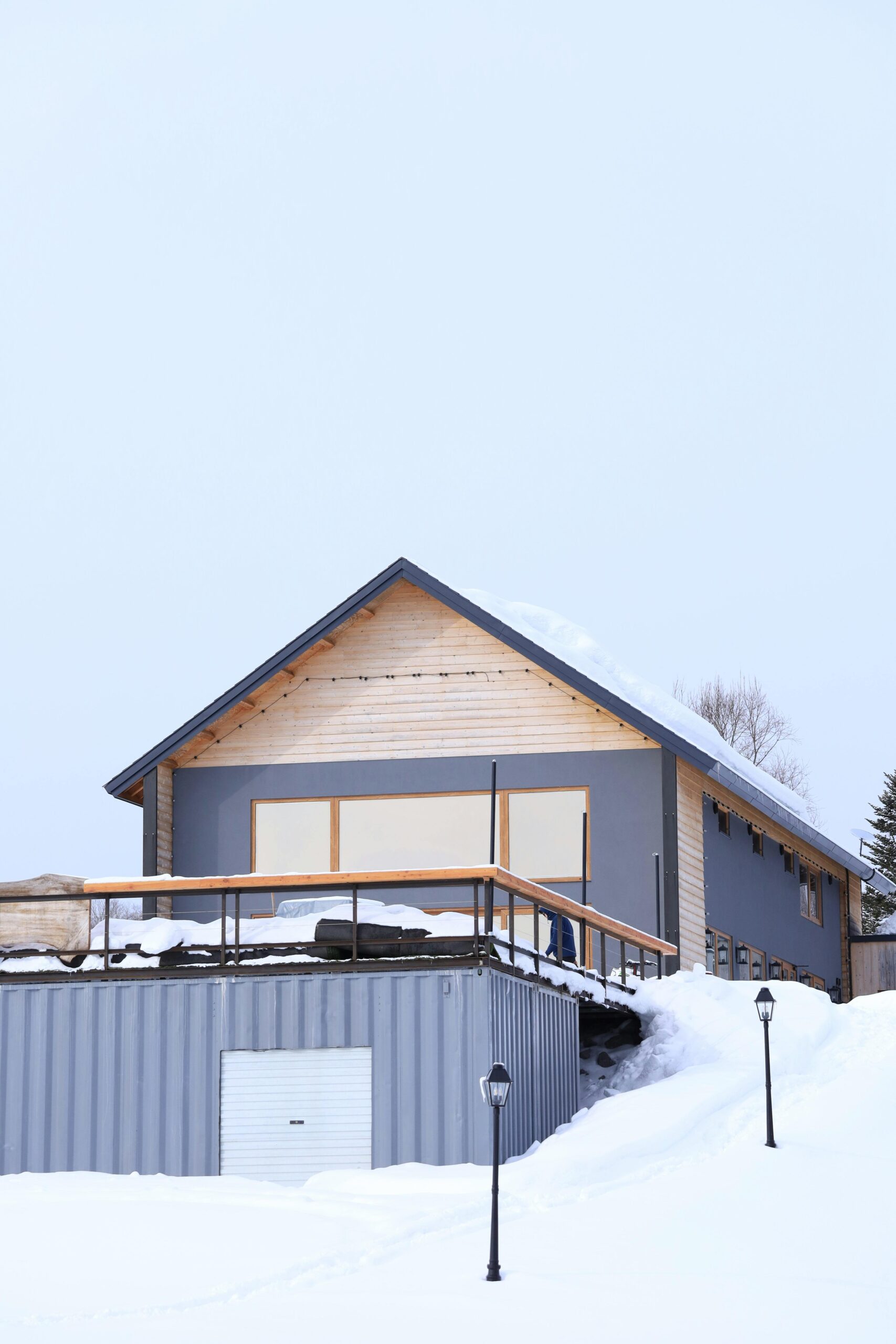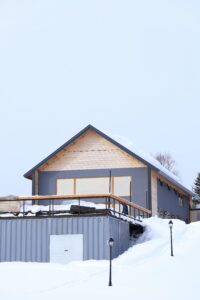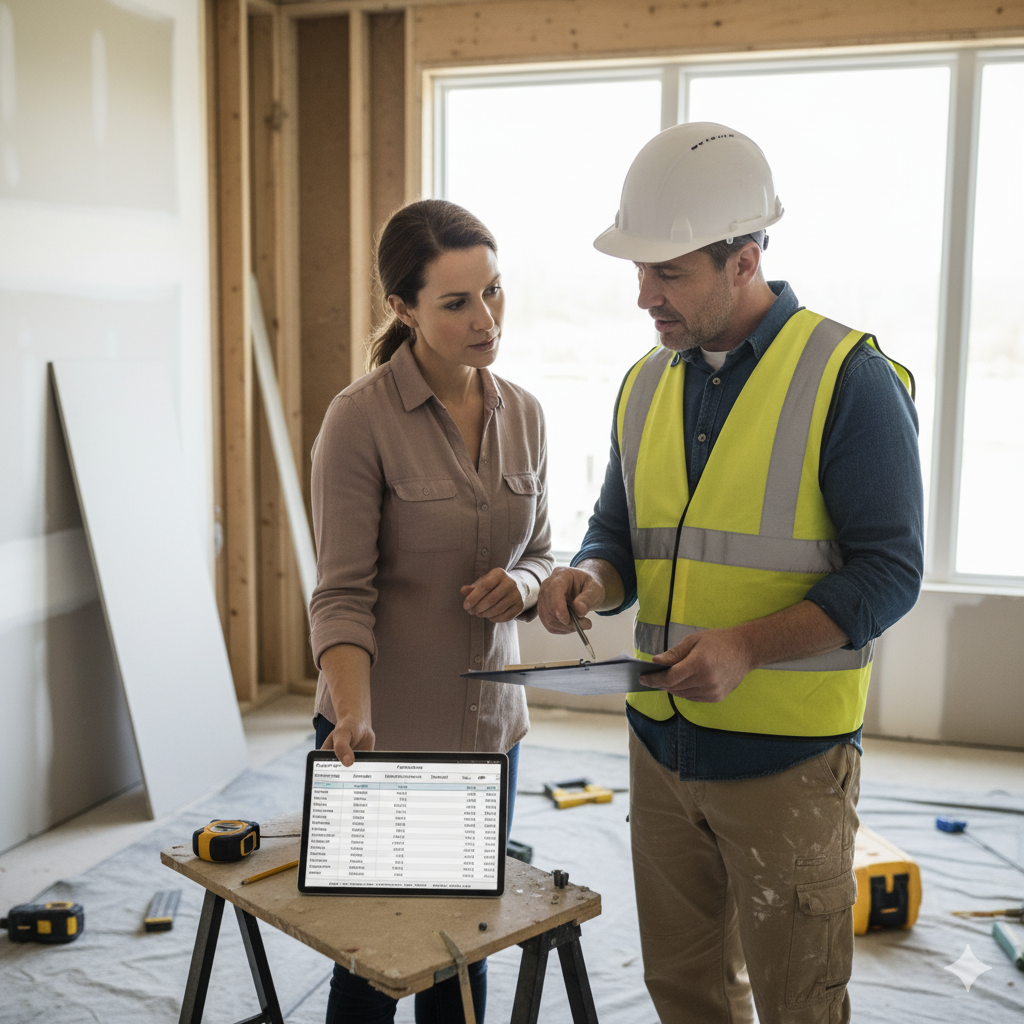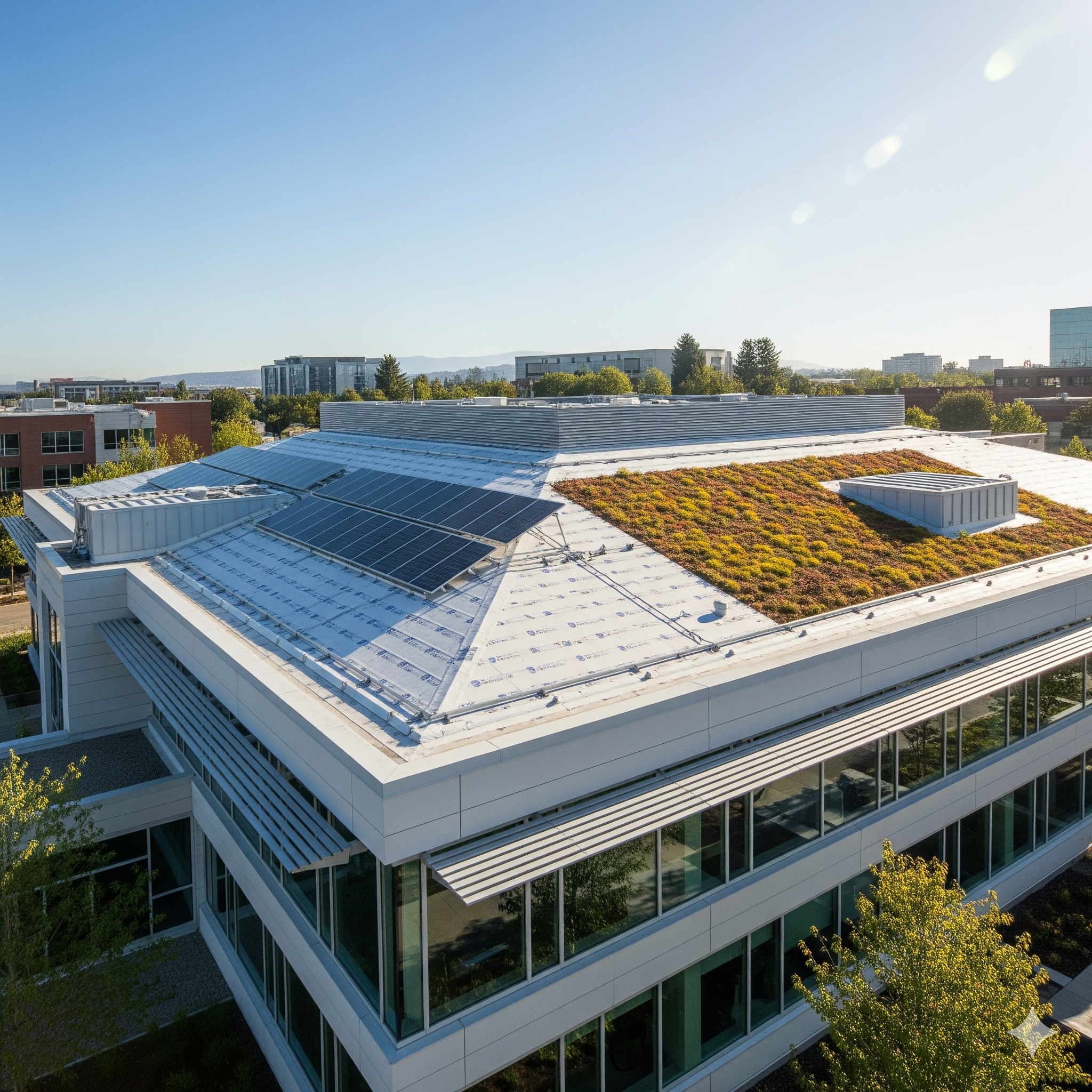
As New Yorkers prepare for another harsh winter weather season, ensuring your roof is winter-ready is one of the most important preventative measures you can take. Winter storms, excess snow, and repeated freeze-thaw cycles put every inch of your roofing system under intense stress, often exposing structural damage, aging materials, and hidden weaknesses that threaten the safety and comfort of your home or building.
⭐️⭐️⭐️⭐️⭐️
“We couldn’t be happier with the job Anthony and his crew did. Our roof looks great. They were respectful of our property and responded quickly to any concerns. Highly recommend.”
— Vicki Doyle
This guide from Blessed Roof outlines the necessary steps to protect your roof from snow, ice, and water damage this winter. Winterizing roofs in New York homes isn’t just about comfort—it’s about avoiding costly repairs, rising heating costs, and emergency leak fixes during the coldest months of the year.
When Should You Start Winterizing Your Roof in New York?
In New York State, it’s essential to start winterizing your roof in early fall, ideally by mid-October. Waiting too long can increase the risk of potential damage as temperatures drop and snow begins to accumulate. To identify any issues early, schedule a thorough roof inspection with the experts at Blessed Roof.
The sooner you inspect attic insulation, repair damage, and clean gutters, the better protected your home will be throughout the winter season. Regular inspections ahead of the heating season help prevent leaks, prevent heat loss, and catch problems before they escalate.
Pre-Winter Roof Inspection Checklist
To ensure your roof is in good condition before the cold months arrive, conduct a professional inspection or use the checklist below to identify issues:
- Loose, missing, or cracked shingles.
- Damaged or corroded flashing near vents, chimneys, and skylights.
- Clogged gutters or downspouts blocked by leaves, debris, or ice.
- Overhanging tree branches that could snap under snow or ice.
- Visible sagging or structural damage.
- Signs of previous water accumulation or ceiling stains inside your attic.
If you’re unsure what to look for, or if your roof is more than 15 years old, a professional inspection is strongly recommended.
Strengthen Roof Structure to Handle Snow Load
Heavy snow accumulation is a significant concern for many homeowners in New York State. Over time, excess snow buildup can strain your roof’s structure, especially if it’s flat or low-pitched.
To prepare:
- Trim overhanging branches to reduce the risk of falling debris and minimize snow accumulation.
- Use a roof rake to safely remove snow after storms (avoid metal rakes that can damage shingles).
- Inspect attic insulation and rafters for signs of stress or sagging.
- Reinforce weak spots in the roof deck if needed.
- Ensure your gutters and drainage systems are clear to prevent pooling and ice dams.
Ignoring snow load can lead to structural failure, leaks, and major repairs in the middle of winter.
Prevent Ice Dams Before They Start
One of the most common and costly winter roofing issues in New York State is the formation of ice dams. These occur when heat escapes through the attic, causing the underside of the snow to melt. When the melted snow refreezes near the roof eaves, it traps water that can seep under shingles, causing further damage.
How to prevent ice dams:
- Check attic insulation to ensure it’s thick enough and properly installed.
- Improve proper ventilation in your attic to maintain consistent roof temperatures.
- Seal gaps around vents, chimneys, and skylights to prevent heat loss.
- Install heat cables in problem areas if necessary.
Addressing attic insulation, ventilation, and air sealing can significantly reduce energy consumption, improve energy efficiency, and lower energy costs throughout the heating season.
Why Proper Attic Insulation and Ventilation Are Non-Negotiable for NY Winters
Most New Yorkers focus on the exterior of the roof when winterizing, but what’s happening inside your attic is just as critical, especially during the harsh winter weather conditions that hit New York State every year.
When your attic lacks proper insulation and ventilation, warm air generated during the heating season escapes upward. This heat loss leads to uneven roof temperatures, causing snow to melt and refreeze at the roof’s edge, forming ice dams that trap water on your roof. The result? Water accumulation can lead to further damage and often result in costly roof repairs.
To help prevent water damage and reduce energy consumption during the cold months, homeowners should take the following preventative measures:
- Check attic insulation for depth, gaps, and quality—older insulation may no longer be effective in withstanding NY winters.
- Ensure all vents are unblocked and promote proper ventilation to balance attic temperatures.
- Seal air leaks around roof penetrations, doors, windows, and pipes to prevent warm air from escaping and cold air from entering.
- Clear debris in and around attic ventilation points to maintain airflow and reduce fire risk.
Poor insulation and ventilation aren’t just roofing issues—they’re part of a larger connection between your home’s energy efficiency and weather resistance. Even the Department of Energy recommends regular attic checks to optimize thermal performance in colder climates.
And while some insulation improvements can be done DIY, it’s best to schedule a professional inspection through a trusted local expert, such as Blessed Roof, to ensure your attic is winter-ready.
Gutter and Drainage Preparation for Snowstorms
Clean and functioning gutters are critical in the winter months. They direct melting snow off the roof and away from your building. If they’re clogged, the resulting water accumulation can freeze and damage both the roof and foundation.
Steps to prepare:
- Clean gutters thoroughly to remove leaves, pine needles, and other debris.
- Flush downspouts and check for blockages.
- Secure loose gutters to prevent them from being damaged by the weight of ice and snow.
- Consider installing gutter guards to prevent clogs during the winter.
- Inspect drainage extensions to ensure water flows away from the building.
Gutter maintenance not only prevents leaks but also improves your home’s exterior durability and reduces long-term maintenance costs.
Manage Snow Removal Safely
Not all snow needs to be removed from your roof, but excess snow, mainly after multiple storms, can lead to dangerous load levels. Knowing when to remove snow is key to avoiding structural damage and leaks.
Safe snow removal tips:
- Use a roof rake with a long, extendable handle to remove snow from the ground.
- Leave a thin layer of snow to avoid damaging shingles.
- Never use a snowblower or shovel on your roof.
- Avoid climbing on icy or snow-covered roofs.
- Contact Blessed Roof for professional snow load relief if needed.
Removing snow without proper technique or tools can do more harm than good. When in doubt, leave it to the experts.
Improve Energy Efficiency Through the Roof
Your roof plays a significant role in your home’s energy efficiency. Heat escaping through your roof increases heating costs and worsens ice dam formation.
To improve efficiency:
- Upgrade or replace attic insulation to reduce heat loss.
- Ensure your attic is adequately insulated to limit energy consumption.
- Repair air leaks around vents, chimneys, light fixtures, and windows to improve energy efficiency.
- Schedule regular inspections to maintain a tight and effective thermal barrier.
Reducing energy costs during the cold months starts with your roof. With the proper setup, you’ll stay warmer, use less oil, and lower your monthly bills.
Emergency Preparedness for Winter Roof Issues
Even with all precautions, winter storms can lead to emergencies. Be prepared with these essential items:
- Waterproof tarp and roofing nails.
- Flashlights and safety harnesses.
- Cold-weather roofing adhesive or tape.
- Emergency contact for roof repair services.
Never attempt major repairs during a storm. If you notice sudden leaks, ceiling stains, or dripping near doors and windows, contact Blessed Roof immediately to avoid further damage.
Why New Yorkers Trust Blessed Roof for Winter Roofing Maintenance
Serving New York State, Blessed Roof is your trusted local expert in winter roof maintenance. Whether you’re preparing a residential home or a large commercial building, we deliver reliable inspections, repairs, and storm-ready reinforcements.
We help you:
- Protect against ice, snow, and freeze damage.
- Lower your heating costs and boost energy efficiency.
- Extend your roof’s lifespan through regular maintenance.
- Respond quickly to leaks, collapses, or damage from winter storms.
We understand the unique challenges of New York winters, and we have the experience to keep your roof in good condition throughout the year. Visit us at Blessed Roof to book a consultation.
⭐️⭐️⭐️⭐️⭐️
“Blessed Roof explained the whole process so well, and we had no surprises. The crew was careful, neat, and checked in regularly. We highly recommend them!”
— Debbie Goss
Take Action Before the Snow Falls
The winter months are tough, but they don’t have to be destructive. With regular inspections, proper insulation, and the right preventative measures, you can keep your roof protected and your energy bills in check.
Contact Blessed Roof today to schedule a professional inspection or complete winterization services before the next snowstorm arrives. We’re here to help you make your roof winter-ready, no matter how cold it gets.
Blessed Roof | Roofing Services for New York State
Serving homeowners & commercial properties across New York
(585) 831-3649
www.blessedroof.com





